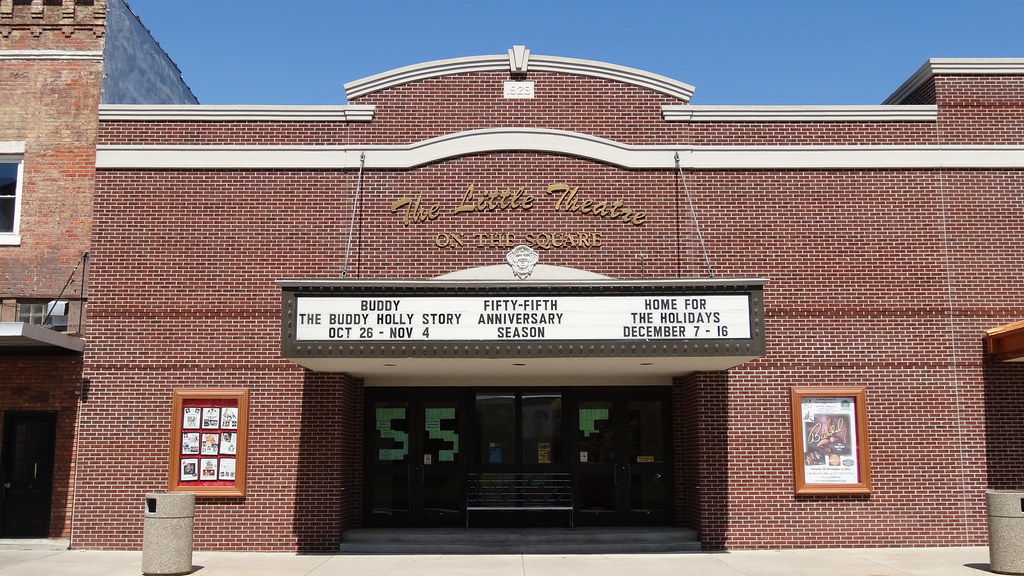

Artist Descending a Staircase (1989), with scenic design by Tony Straiges. Oh Coward! (1986-87), with music and lyrics by Noel Coward. Corpse (1986), with costume design by Lowell Detweiler. Other LGBT-associated shows at the Helen Hayes included: The Last Night of Ballyhoo (1997-98), with scenic design by John Lee Beatty. Prelude to a Kiss (1990-91) by Craig Lucas, and with actor Michael Warren Powell. The Nerd (1987-88), directed by Charles Nelson Reilly, with scenic design by John Lee Beatty, and with actor Robert Joy. LGBT-associated hits at the Helen Hayes included: (This demolition, along with the Morosco Theater, prompted the public demand for designation of the Broadway theaters, which the Landmarks Preservation Commission undertook soon after). This theater was renamed the Helen Hayes Theater in 1983, after the earlier Helen Hayes Theater, at 210 West 46th Street, was demolished in 1982. One other LGBT-associated play at the Little Theater was The Curse of an Aching Heart (1982), with scenic design by John Lee Beatty. The play also featured stage design by Bill Stabile, and Jonathan Hadary replaced Fierstein in the leading role. Accepting his award for producing the play, Glines thanked his lover, co-producer Larry Lane, becoming the first person ever to acknowledge a same-sex partner on a televised awards ceremony. Torch Song Trilogy won an Obie Award and Tony and Drama Desk Awards for Best Play and Best Actor (Fierstein). The play centers on the character of Arnold Beckoff, a gay, Jewish, drag queen, who craves a committed, romantic relationship and a traditional family with a husband and child. They were then combined into a four-hour, three-act Off-Broadway production by The Glines, an organization founded by John Glines that presented gay-themed plays, before moving to the Little Theater where it ran for 1,222 performances. The plays premiered individually at Off-Off-Broadway’s La MaMa Experimental Theater Club. Torch Song Trilogy comprises three separate plays, International Stud, named for the gay bar at 117 Perry Street which had a famous back room, Fugue in a Nursery, and Widows and Children First!. In 1982, Harvey Fierstein burst into the Broadway theater world with his Torch Song Trilogy, in which he also starred. The previous incarnation of the play ran at the Circle Repertory Theater in Greenwich Village, which produced many gay-themed plays it won a 1976-77 Obie award. Among other issues, Francis is confused about his sexuality, which is left unresolved at the end of the play. The protagonist of this antic comedy is Francis Geminiani, a working-class young man returning to his Philadelphia home from Harvard to celebrate his 21st birthday. 
From 1977 to 1981, after Off-Broadway and regional productions, Albert Innaurato’s Gemini played here for 1,819 performances, supervised by Marshall W.

Returning again to use as a legitimate theater, the Little Theater hosted two intimate family dramas that were pioneering Broadway plays dealing with gay themes. The Westinghouse Corporation leased the building from 1965 to 1974. As a legitimate theater, it produced Tambourines to Glory (1963), written by and with lyrics by Langston Hughes, starring gospel legend Clara Ward and Baby Want a Kiss (1964), with scenic and costume design by Peter Harvey.
#LITTLE THEATRE ON THE SQUARE TV#
The Little Theater was used as a lecture hall, and then leased to CBS Radio and ABC TV until 1963. Dark Victory (1934, opened at the Plymouth Theater), with actor Tallulah Bankhead.Honeymoon (1932-33), with actor Ross Alexander.Let Us Be Gay (1929), a hit written and directed by Rachel Crothers, and with actor Ross Alexander.Trigger (1927-28), staged by George Cukor.He and She (1920) by Rachel Crothers, with Crothers performing as well.A Little Journey (1918-19) by Rachel Crothers.The Truth (revival, 1914) by Clyde Fitch, with actor Guthrie McClintic.Relating to the feeling that audience members were guests in Ames’ house, he had the theater designed in a “homey” Colonial Revival style.Įarly plays with LGBT associations at the Little Theater included: Ames envisioned his Little Theater as a house where the actors and audience would be in close proximity. The Little Theater, opened in 1912, was a project of Winthrop Ames, heir to a large New England industrial fortune, who rejected the family business and turned instead to theatrical producing.







 0 kommentar(er)
0 kommentar(er)
